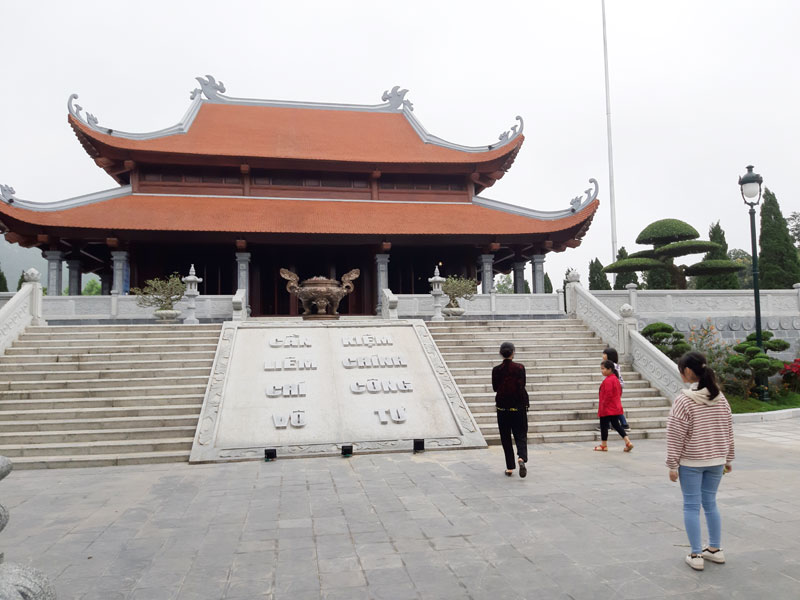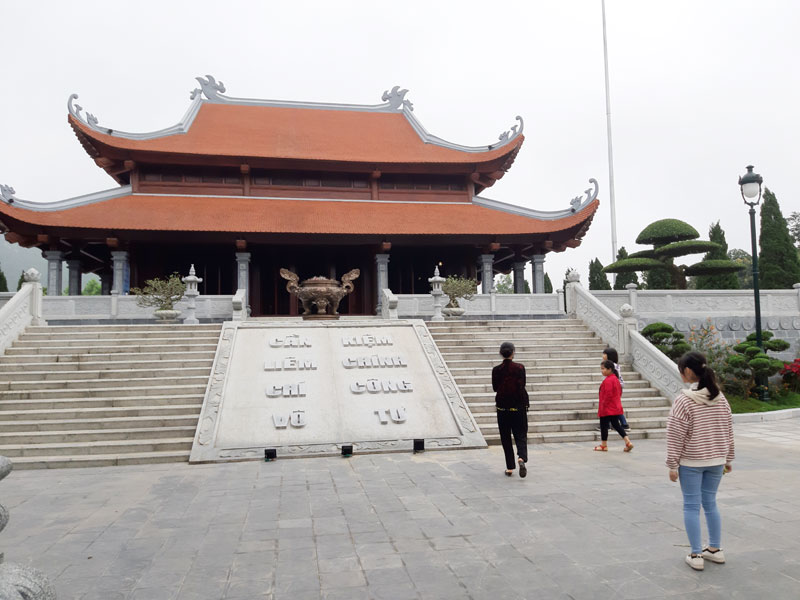
(HBO) - On historic May days, we returned to the relic site - the first money printing factory of the Vietnamese revolutionary administration. It is the place where Uncle Ho was welcomed and has been recognised as the national relic site. We also visited Co Nghia – Phu Lao commune, now known as Phu Nghia commune, Lac Thuy district, to see the new vitality of the homeland.
 Commemorative House for officials and workers of the money printing
factory at Chi Ne Plantation, Lac Thuy district. It is a pride of local
residents and the Vietnamese finance industry.
Commemorative House for officials and workers of the money printing
factory at Chi Ne Plantation, Lac Thuy district. It is a pride of local
residents and the Vietnamese finance industry.
Secretary of the Phu Nghia communal Party Committee Tran Duc
Minh said the committee and people of Co Nghia commune, now known as Phu Nghia
commune – visited by Uncle Ho twice, are
striving to build a better homeland.
In May 2019, the house was officially inaugurated, becoming
a pride of local officials and people as well as the country’s finance sector
and remembering the merits of President Ho Chi Minh, the family of bourgeois Do
Dinh Thien and revolutionary contributors during the first days of laying
foundation for the national finance sector. It is the place where the 100 VND
bill, called the "green buffalo”, was born. With an extremely important
historical mission, the bill contributed to the currency fight against the
enemy to protect national independence and becoming a weapon on the economic,
financial and monetary fronts. The factory has become a pride of the revolutionary
tradition, the sense of self-reliance, resilience and patriotism.
The first money printing factory of the Vietnamese
revolutionary administration (1946-1947) was chosen by the Government, the
Finance Ministry and President Ho Chi Minh to be placed at Chi Ne plantation.
It was recognised as the national relic site by the Ministry of Culture, Sports
and Tourism. The money printing factory – Chi Ne plantation was a stopover of
President Ho Chi Minh during his working trips.
Phu Nghia commune has many development opportunities, serving
as a key area for tourism and services with Tien pagoda. A number of major
projects are also underway there./.
In the spirit of "Party members go first, the people follow”, all households of Party members in the Doan Ket sub-region in Da Bac town, Da Bac district, voluntarily removed gates and fences, and donated land when the road expansion project passed through their properties. Inspired by their example, 68 households in the sub-region quickly followed suit, contributing over 1,400 sq.m of residential and perennial cropland to widen the main road through the residential area. The exemplary role of Party members in Doan Ket stands as a shining example of studying and following President Ho Chi Minh’s thought, morality, and lifestyle.
The Hoa Binh provincial People's Committee held a monthly meeting on May 29 to assess the implementation of socio-economic development tasks in the first six months of 2025, the progress of key projects, and some other important issues.
During his lifetime, President Ho Chi Minh always expressed his deep affection and special concern for children and youth. He once emphasized: "Caring for and educating children well is the responsibility of the entire Party and the entire people”; "First of all, the family (i.e. grandparents, parents, siblings) must do this job well”. "the Party Committees…, the Children’s Committee, the Youth Union, the education sector, and all related organizations must have specific plans to ensure children grow healthier and more progressive”. His teachings has been remaining valuable and serving as the guiding principles in the work of protecting, caring for, and educating children. In line with this ideology, Hoa Binh Province has continuously been prioritizing and investing resources in the well-being of children in recent years.
Mr. Nguyen Phi Long, the alternate Member of the Party Central Committee and Secretary of the Provincial Party Committee chaired the meeting of the Standing Committee of the Provincial Party Committee to provide opinions on several investment projects within the province. There was the attendance of Ms. Bui Thi Minh, the Permanent Deputy Secretary of the Provincial Party Committee and Chairwoman of the Provincial People’s Council; Mr. Bui Đuc Hinh, the Deputy Secretary of the Provincial Party Committee and Chairman of the Provincial People’s Committee and other members of the Standing Committee; the leaders from other departments, agencies, and some localities.
The Standing Board of the Vietnam Fatherland Front (VFF) Committee of Hoa Binh province held a meeting on May 28 to honour outstanding village elders, village heads, and reputable individuals from local ethnic minority and religious communities.
In mid-May, the provincial Museum organised an exhibition named "Duoi la co Dang Cong san Viet Nam quang vinh” (Under the flag of the glorious Communist Party of Vietnam). This meaningful activity took place in the joyful atmosphere to celebrate the country's major holidays and the Party congresses at all levels for the 2025-2030 term, towards the 14th National Party Congress.



 Commemorative House for officials and workers of the money printing
factory at Chi Ne Plantation, Lac Thuy district. It is a pride of local
residents and the Vietnamese finance industry.
Commemorative House for officials and workers of the money printing
factory at Chi Ne Plantation, Lac Thuy district. It is a pride of local
residents and the Vietnamese finance industry.